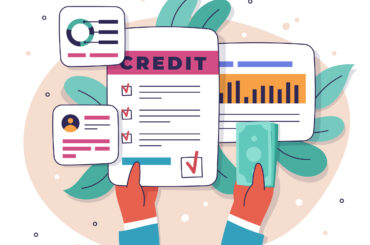Email writing is as relevant now as ever. Emails are looked upon as a formal channel of communication. Especially now, when meetings are conducted over sketchy video calls, emails add to the clarity of business decisions, collaborations, and much more.
Even after sending, receiving, and going through so many emails on a daily basis, we tend to dread writing emails to clients. Clients judge your email within microseconds. They see a vague, boring, or downright bad email and decide they can’t be bothered to figure out if you’re worth their time.
Here are some facts to reiterate the importance of email in business communication:
- 86% of business professionals prefer to use email when communicating for business purposes.
- If you think emails are only for senior and more experienced professionals, think again. 73% of millennials identify email as their preferred means of business communication.
- 80% of business professionals believe that email marketing increases customer retention.
Do you worry about your emails too? It’s time to turn a new leaf (or tab) and polish your email writing skills.
Professional email writing tips
- Use a crispy, catchy subject line
Try to keep the subject line within 60 characters. You may also include emojis to attract eyeballs. Personalize it with the first name of the recipient.
- Use an appropriate greeting and start with a “Thank you”
Avoid using a generic greeting, and try to address them by their name.
Address them as you would if you were meeting them in person, like “Dear Mrs. Smith” or “Hi John.” In case you don’t know the person, write “Dear Sir/Ma’am” instead of “To whom it may concern.”
Whether you are replying to an inquiry or sending a proposal, thank the recipient for their query or time, respectively. This creates a positive impression in their minds and sets a pleasant tone for further communication.
- Use active voice
It is easier to read and comprehend active voice than the slow drone of passive speech. It also engages your readers, ensuring they stick with you until the very end.
- Skip the jargon
Any kind of business writing – especially email – should be easy to understand. Unless you are absolutely sure that the reader is an industry expert who is well-versed with acronyms and jargon that you will be using in your email, skip it altogether.
- Don’t apologize
Soft language like “sorry to bother you…” and “whenever you have a second…” just undercuts your message. You may even appear underconfident, and most people would be skeptical of doing business with you.
- Don’t talk about yourself
It seems a bit contradictory, right? If you don’t talk about yourself, how will your readers know that you can solve their problem? It’s simple, the recipient doesn’t know you – and they don’t want to know you. They want to know if their problem has a solution.
Make the reader the hero to captivate their attention. So avoid using personal pronouns like “I,” “me,” and “my.” Instead, use “you” and “you’re,” addressing the client more often in your email.
For example, consider the following two snippets:
- “I can significantly increase a business’s productivity.”
- “You will see a significant increase in productivity.”
Which one do you think will interest the reader more?
- Don’t end the email abruptly and include a CTA
Conclude by recapping the key points in case the email was longer than average. Include a CTA (call to action) and a channel of communication that they may use to resolve doubts, perhaps.
Whether you want them to check out your case studies and portfolio or remind them of due payment, include a link they can easily follow. Always add closing remarks encouraging further communication.
- Proofread before sending it
Few things are as off-putting as typos in business emails. Careless typos suggest an unprofessional attitude and can be a red flag for prospective clients. So make sure you proofread your email at least once before sending it.
Best practices for email writing
- Show, don’t tell
Your prospective or current client wants results. They only want to know the outcome or benefit they will get. Let your email speak to their problems and what would be a suitable solution. And give them the power to decide if they want to take it to the next step.
- Drip marketing for newsletters
Newsletters are great for cultivating client relationships. But your latest email newsletter that you shoot out to all your subscribers may not be a good entry point for your most recent clients who have just signed up. Drip emails can help you here.
Drip marketing is all about giving your new subscribers relevant information at the right stage of their journey with you. These are automated emails that come from a queue of pre-written emails, which can even be personalized with the recipient’s name, company information, and more.
Drip campaigns make it easier to ease them into your newsletter and retain clients. It helps them adapt and catch up to the new content you send.
- Send an email as soon as they sign up, introducing your brand and what they can expect from your newsletters.
- Set up drip campaigns based on event triggers and user segments to make them relevant.
- Keep it short
Get to the point quickly and be concise. Keep your sentences clear and short. Include everything your client needs to know in a single email. However, take care not to overwhelm them or appear impersonal and abrupt. The key lies in striking a balance and presenting useful information with brevity.
- Don’t spam.
In case the recipient hasn’t replied back, don’t spam them. Sending spam emails is just like arriving unannounced at someone’s house every other day and knocking on their door when they don’t want to let you in. Be respectful of their space.
This, however, doesn’t mean you shouldn’t follow up with your prospects. For outbound sales, you may even need to follow up as many as 4-7 times. As long as you are offering something valuable to them in a brief email, they will revert in some way or the other. Be patient.
- Pay attention to IP/Domain warmup and frequency
Speaking of spam, ISPs always look upon new IP addresses with suspicion, that is, until the sender’s reputation elevates to positive. This is why when you send out a lot of emails for the first time; they end up undelivered or in the spam.
IP/Domain warming methodically adds campaign volume week-over-week while maintaining a consistent frequency, bounce rate, etc., to establish a positive sending reputation with ISPs as well as users. This ensures high deliverability.
- Use a service to automate this process, although it can be done manually too.
- Implement email verification when new users sign up.
- Regularly update your email list and remove invalid emails or those with extremely low open rates and high bounce rates.
- Be clear and detailed
Finally, avoid being vague and leaving room for interpretation. For example, if you provide some software as a service, avoid generic descriptions like “grow your business with this software” or “organize your business and increase returns.” A much better alternative would be “this software is known to reduce bounce rate by 30%” and “this is a CRM software that recognizes the expenses and returns of each sales channel.”
Email writing is a crucial aspect of growing your business. Take your time to draft a precise, grammatically sound, un-ignorable email that not only sells but also builds relationships.





